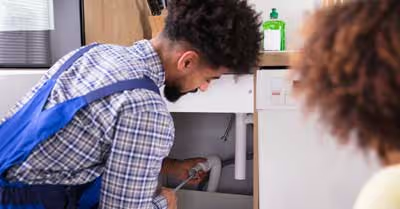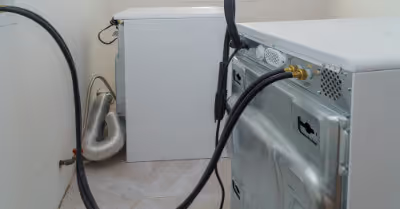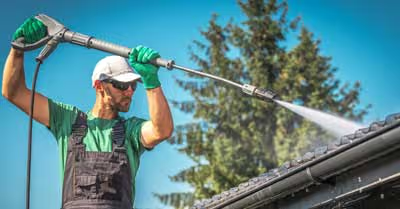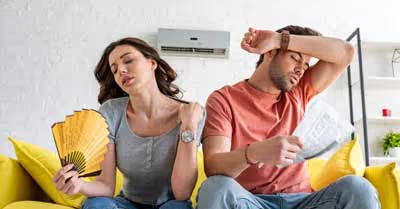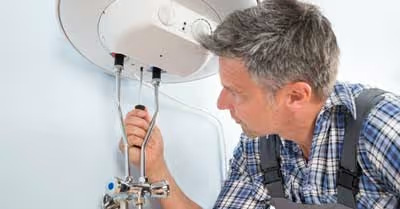Table of Contents
Furnace Troubleshooting: Everything You Should Know About It
When it comes to learning how to fix a furnace, you need to be aware of the following tips and tricks. Some of the most common issues are rather easy to solve, as long as you have the right knowledge on hand.
First Of All, You Should Check The Filter
As soon as you notice something is not working as it should on your furnace, you need to check the air filter. It is common for debris to accumulate, causing the strainers clog, which might prevent the heating system to properly turn on, impede airflow, or even worsen the air quality of your home. In excess, dust and dirt might cause premature breakdowns to your system. To prevent the problem from getting more of a concern than what it should make sure you change filters regularly. For example, you can set calendar reminders to check the air filter of your system every month. Changing the filter is rather simple, but you need to do it correctly to avoid problems in the well-functioning of your furnace.
To change the filter, make sure you turn the thermostat and your furnace off before doing anything to your warming system. Locate your filter: different heating systems might have it in different places. In some furnaces, you may find the filters located in the intake and tend to look like a grate on a floor, wall, or ceiling. Other filters are in the furnace itself.
After you've located the filter, hold it up towards a light source. When you notice light cannot pass through easily, it is time to clean it or replace it with a new one. Another good sign the filter needs to be changed is the presence of a dusty and dirty smell coming from the vents.
If you want to install the new filter, you must do so checking the direction arrows: they must point in the airflow's direction. Installing your filters upside down can have a drastic negative effect on your furnace's efficiency.
Check The Thermostat's Conditions
If the problem doesn't seem to come from the filter of your furnace, chances are, the cause is the thermostat. You might need to replace its batteries or give it a gentle clean with a soft paintbrush to remove any dirt and dust that might be there. If your thermostat is close to sunlight or other types of heat sources (including lamps, space heaters or ovens), consider changing its location, as it might be getting false readings that are causing your furnace to malfunction. If your system is on a timer and you own an electronic model, ensure the date and time are correct.
Also, ensure the thermostat is on the "heat" function and that it reads at least 5 degrees above room temperature. Many call a professional without even checking this!
Keep The Switch and The Electrical Panel Under Control
One of the most common errors that we are stressing out in this furnace troubleshooting guide is failing to check the power. Sometimes the problem might be a lot simpler than what you think: someone might have turned the switch off. In these cases, you should try to turn it back on if you can.
If an electrical panel is powering your furnace, you need to ensure the HVAC breaker is on. If you don't see any labels, you should switch back on the one that is in the opposite direction than the rest. You should hear a click as soon as the breaker has reset.
If you are trying to restore power to a fuse box, the procedure would be to look for a melted and discolored fuse, unscrew it and replace it. Keep in mind that you must change the fuse with an identical one, that is of the same size and type of the melted one.
If you successfully manage to restore power, you have made it! Otherwise, if you notice the breaker is still tripping, it is time to contact a professional.
Mind you: before any attempt to restore power, you need to have hands and feet completely dry. If you notice signs of damage or moisture, you should contact an electrician.
Check the Flame Coming From The Furnace
One way to check whether your furnace is properly working is to check whether the flame it produces is of a healthy blue color. Such a color indicates that your heating system is burning the fuel efficiently and safely.
On the contrary, with a yellow, red, or purple flame, you must contact a professional. The most common failures associated with the burners come from contamination. You might need to clean the burners as dust can quickly accumulate there. Don't try to fix it yourself, as it might be dangerous.
Check The Gas Valve and The Pilot Light
When you check the furnace flame and notice it is out, you'll need to light it up again. You can do it on your own, as long as you are very careful, and you follow the instructions' manual of your furnace. Keep in mind that you must turn off the gas at least 10 minutes before attempting to light the pilot. If you smell any gas, even after you've turned it off for some time, don't do anything! That means you have a leak, which means you should evacuate your house as soon as possible and call the gas company and the fire department.
Ensure you Secure the Front Panel And That the Safety Switch Is Working Properly
When it comes to learning how to fix a furnace, one of the first things you need to learn is that a heating system won't work with the safety switch off. You can generally find such a switch on the furnace door. It serves to prevent the fan and burner from coming on when removing the access panel. You might have to install a new safety switch if you notice it doesn't pop out as soon as you remove the door, as the functioning of your system might be affected.
Additionally, make sure the front panel of your furnace is secured and in place, or your heating system will most likely fail to operate. Most furnaces won't work without the door correctly sealed. Check the instructions of your model and follow the steps to press the panel.
Make Sure All The Vents and Registers Are Open
Sometimes your furnace might run correctly without your rooms getting the proper amount of heat. In this case, before getting to other furnace troubleshooting tips, you should inspect your home and all the supply and return grills that manage the airflow. All of them should be open, without any obstructions. Even if it may sound like an obvious tip, many homeowners forget to pay attention to cluttered areas of the house, which might lead the furnace to fill with debris and dirt.
Ensure all the vents are far from rugs, furniture, or anything that could limit the airflow. Also, avoid storing flammable materials next to the furnace, as the consequences might be disastrous. Make sure you regularly clean and vacuum the area around your heating system and around the grates, to avoid the filter to get clogged sooner than usual.
Blocked vents might not only affect the amount of heat coming into your rooms, but they can also cause leaks in the ducts because of the excessive pressure coming in. If you have vents and registers located somewhere you are not living in, don't try to close them: you will end up causing more problems to your heating system.
If Your Furnace Is Not Producing Enough Heat
There are many reasons why your furnace might have stopped producing heat. One of the main reasons (and the easiest to fix) is that the thermostat is not in the "heat" function. To solve the problem, try moving the dial-up to a few degrees and notice if you feel any difference.
When your furnace is not producing as much heat as before, or you feel that is not enough, the problem might be due to a poor-performing system. Check whether the filters are in good condition and if they are not, make sure you change them. If the problem is not solved even with new and clean filters, you should call a professional and hear the verdict.
Recent Articles



